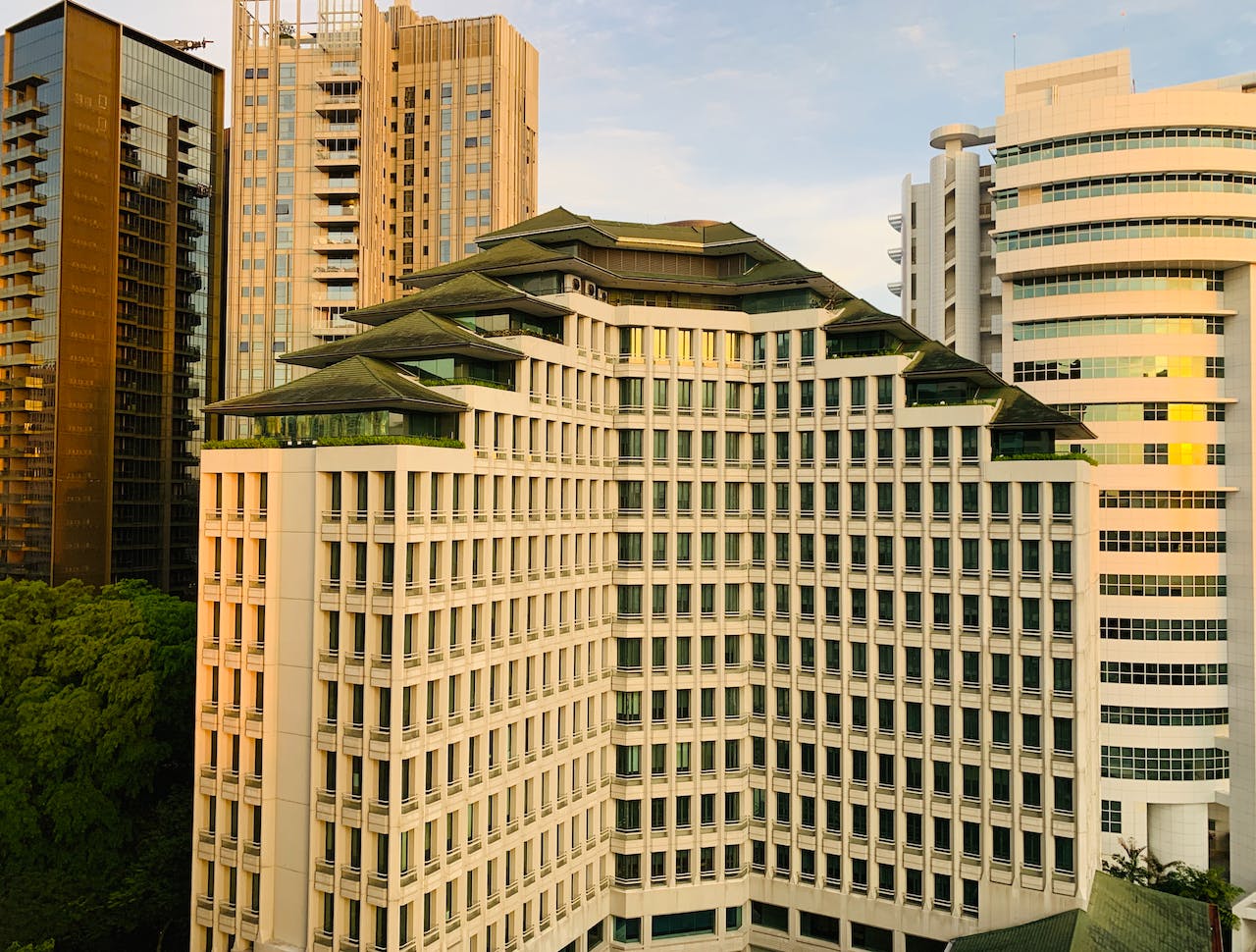Written by Team Farallon

The word “service”, in the legal context, refers to the delivery of the very first set of court documents (also known as ‘originating process’) to the person who is being sued.
For example, A wants to sue B for unpaid debts. A has to engage a lawyer to commence legal proceedings against B. Upon receiving A’s instructions, the lawyer prepares a Writ of Summons (i.e. a court document used to commence civil legal proceedings) and a Statement of Claim (i.e. a document that sets out the facts that A is relying on to sue B), and files these documents with Court for processing and issuance.
Once the Writ is issued by the Court with the Court seal and an assigned case number, and the Statement of Claim is issued by the Court, the next step is for A’s lawyers to make arrangements to serve, i.e. deliver, the documents to B, who is now the defendant. This step is called ‘service of process’.
Legal proceedings do not continue until service has been effected, i.e. properly carried out, on the defendant.
Under the laws of Singapore, where the defendant is an individual, service must be effected personally – the person serving the documents must hand over the documents to the defendant personally. If the documents are handed over to a person other than the defendant, then, even if the defendant is aware of this, service will not be effective. However, if the defendant had instructed and authorised another person to accept service of the documents, and the plaintiff, having been informed of this, is agreeable, then service will be considered effective.
To illustrate some examples:
Where the defendant is a company, service can be effected by leaving the documents at the registered office of the company, sending the documents by registered post to the registered office of the company, or serving on an officer of the company (such as a director).
The above procedures apply where the defendant is based in Singapore. Different procedures apply if the defendant is based overseas (see below).
Once service is effected, the defendant has 8 days from the date of service to enter appearance in the lawsuit, by filing a document called a ‘Memorandum of Appearance’ with Court to inform the Court and the plaintiff that the defendant wishes to contest the claim. This can be done by the defendant personally, or through lawyers.
The defendant then has 22 days from the date of service to file its Defence (and Counterclaim, if any). This is a document that sets out the facts that form the basis of the defendant’s defence and, in the case of a Counterclaim, any claim that the defendant may also wish to make against the plaintiff.
If the party to be sued is based overseas, then the plaintiff must first apply to the Singapore courts for permission to serve the court documents on the party out of jurisdiction.
Service out of jurisdiction will be allowed if the plaintiff can show, to the satisfaction of the Court, that:
The plaintiff must be able to show that his claim (or claims) has a sufficient connection with Singapore. If the claim is not sufficiently stated or there is ambiguity about the claim’s connection with Singapore, the Court may refuse to give permission to serve the legal papers out of jurisdiction.
The claim must contain facts from which it can be inferred that there is a good prospect of success of the claim.
The claim must be such that it is most suitable for Singapore courts, and not the courts of some other country, to preside over the matter.
It is important that the plaintiff give full and frank disclosure of all material facts pertaining to the application to seek permission to serve out of jurisdiction. This includes disclosing facts which could potentially have an adverse effect on the application.
If the plaintiff does not make full and frank disclosure, and it comes to the defendant’s attention later on that the plaintiff had knowledge of certain facts that would have affected the success of the application for permission to serve out of jurisdiction, the defendant can apply to Court to invalidate the court order that granted permission to serve out of jurisdiction. If the Court grants the defendant’s application, the court papers would be regarded as not having been served on the defendant in the first place.
There are various methods by which a plaintiff can effect service out of jurisdiction. The number of methods will, however, differ depending on whether or not the country in which the defendant is located is Malaysia, Brunei or a country with which Singapore has a Civil Procedure Convention (such as the People’s Republic of China).
Summarised below are the various methods of service available:
After effecting service, the plaintiff will have to file with the Singapore courts either:
Once service is effected, the defendant has 21 days (or longer, if the order by the Court) from the date of service to enter appearance in the lawsuit.
If the defendant does not enter appearance within the stated period, the plaintiff can proceed to take the necessary steps to obtain default judgment against the defendant for failing to appear. This means the plaintiff will automatically obtain its claims in the lawsuit.
Sometimes, even though the originating process may have been served by the plaintiff out of jurisdiction on the overseas defendant, there may have been errors in the service process, such that the defendant may not actually have known that he has been sued in Singapore and has to enter an appearance in the lawsuit. Or, even if the defendant is aware of the existence of the lawsuit, the defendant (and his lawyers) realises that service may not have been properly carried out.
In these cases, service may be regarded as invalid. A defendant may apply to Court to challenge such invalid service and request that such service be set aside, i.e. rejected, on the basis that service was defective as it was not properly carried out.
If service is invalid such that it is set aside, the plaintiff would have to, as a matter of procedure, serve the court documents on the defendant all over again, which would take up additional time and resources of the plaintiff. While this does not get rid of the lawsuit, it certainly aids the defendant in tripping up the plaintiff as a matter of strategy.
However, whether or not service is indeed invalid would depend on the type of irregularity. Certain irregularities can be cured by the courts so as to render the erroneous service valid nevertheless.
Below sets out the three categories of irregularities in the service of process out of jurisdiction, and whether or not they are curable by the Singapore courts.
Cases where service is regarded invalid because the attempted service was unsuccessful in bringing notice of the claim to the defendant
Example:
Cases where service is regarded invalid because the method of service employed – though successful in bringing notice of the claim to the defendant, went against the law of the foreign jurisdiction
Example:
Cases where service is regarded invalid because the method of service employed – though successful in bringing notice of the claim to the defendant and did not go against the law of the foreign jurisdiction, nevertheless failed to comply with a procedural requirement provided for under the laws of Singapore.
Example:
Notably, while the Court has the discretion to cure Category C irregularities such that service will be regarded as valid, the Court will first consider the following factors before deciding whether to cure the irregularity:
If the irregularity in service cannot be cured, either because it (a) falls within Category A or B; or (b) falls within Category C but the Court, after having considered the four factors above, decides that it is not just to cure the irregularity, then the service out of jurisdiction will be regarded as invalid and not effective.
The consequence is that the plaintiff will have to serve the court documents on the defendant all over again. This essentially ‘resets’ almost the entire litigation process, since the timelines for parties to take steps in the lawsuit will have to be recalculated from the time the court documents are re-served on the defendant.
If the irregularity in service can be cured, because it falls within Category C and the Court decides, upon evaluation, that it is just to cure the irregularity, then the service out of jurisdiction will be regarded as valid and effective. The litigation process will carry on from where it was previously suspended because of the defendant’s challenge to service.
In a scenario where a defendant applies to Court to set aside the plaintiff’s service out of jurisdiction on the basis that the service is invalid, the plaintiff has to prove that service was validly effected. To do so, the plaintiff must establish the following:
There are three principal routes for the defendant to challenge validity of service. The defendant can demonstrate that:
In response to the plaintiff’s attempt to cure an invalid service, a defendant can show that the irregularity is either not curable, or that the Court should not exercise its discretion to cure the irregularity.
It is then up to the Court to determine whether or not service was indeed invalid and if so, whether service should be set aside. As mentioned, if service is set aside, the plaintiff would have to, as a matter of procedure, serve the court documents on the defendant all over again.


Farallon Law Corporation
21 Collyer Quay #01-01
Singapore 049320
Farallon Law Corporation
21 Collyer Quay #01-01
Singapore 049320
We are recognized regionally by the world-class quality of legal services that we provide. Rely on our capabilities to help you resolve your legal challenges today.